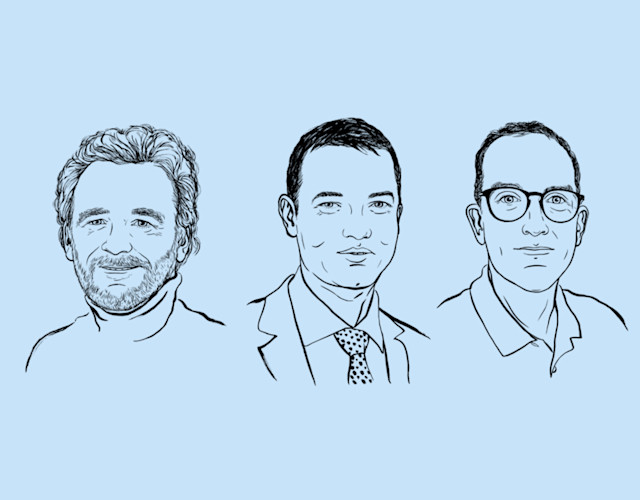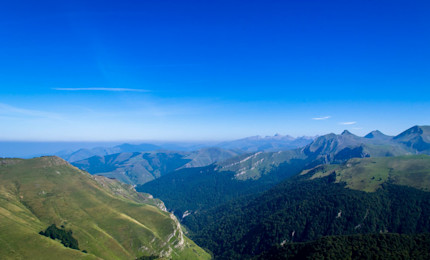Urgence gaz 0 800 028 800

A virtuous and efficient energy mix is achievable!
While the different forms of energy are currently managed as standalone entities, multi-energy allows us to conceive a global energy system which is more efficient, more diversified and more local. François Maréchal, Jean-Michel Reneaume and Éric Pourredon share their perspectives.
Contributors:
François Maréchal, Professor at the École Polytechnique Fédérale de Lausanne (EPFL)
Jean-Michel Reneaume, Director of the École Nationale Supérieure en Génie des Technologies industrielles (ENSGTI)
Éric Pourredon, Manager of the energy translation department, Communauté d’Agglomération Pau Béarn Pyrénées

Why is multi-energy being seen as a top priority issue?
Éric Pourredon – In France, the highly centralised system is in the process of changing, affected by the development of renewable energy and the search for greater efficiency and a more virtuous system, based on a local energy mix. Regulatory constraints, such as territorial climate-air-energy plans (PCAETs) for local authorities, have established the formal targets and commitments needed to move toward multi-energy.
François Maréchal – The issue touches upon every aspect of energy infrastructure: the energy management system is based on fossil energy and its capacity for storage. In the future, we will need to consider the management of carbon and renewable energy flows. The multi-energy system challenges the energy efficiency of systems.
Jean-Michel Reneaume – We must not forget where this is coming from: the energy resources we are using are not inexhaustible!
What is the role played by the development and integration of renewable energy?
J.-M. R. – Renewable energy is helping change attitudes, practices, and also needs. After a few teething troubles, renewable energy sources are presenting a more mature technical response (solar, pyro-gasification, methanation, etc.), which is therefore more reassuring. In addition, multi-energy further strengthens the local dimension that first emerged with renewable energy.
F. M. – Some renewable energy sources are faced with the problem of storage and their diffuse, intermittent nature. Biogas, meanwhile, can be seen as a dense, storable form of energy, connected to other networks. If the flow of CO2 emitted during its production can be recovered, you can even double energy storage capacity. A circular model that has already been mastered today. In both renewable energy and multi-energy, the notions of storage, exchange, sharing, power, security of supply and efficiency are at the heart of the process.
What part do new communication technologies and data play in this proposed interconnection of energy sources?
E. P. – The challenge over the coming years is to master energy data; this is the “smart city” idea, with the development of communication technologies allowing each person to be an actor in choosing the energy sources they use. New technologies offer a real energy management tool, both for the industry and the end user. They virtualise energy and make the diversification of its use more accessible.
J.-M. R. – Previously, what placed limits on the design of any energy synergy was the technological dimension. Today, a multi-energy approach, involving very large systems to manage, can draw on Artificial Intelligence (AI), data learning or even data mining to exploit data on a huge scale.
F. M. – These technologies are essential, because they will allow a multi-energy system to be more and more predictive, to provide more effective management: energy demand, resources, diagnostics, outages, the right combination of energy sources, etc. That is where the idea of Smart Gas Grids comes in for the gas network.
What are the biggest challenges and the main constraints with a multi-energy approach?
F. M. – One of the main challenges, and a considerable one at that, is restructuring an entire sector, redirecting investment, and encouraging the creation of local jobs. It comes down to a re-think of a global system: technical aspects, new occupations, new businesses, energy law, new responsibilities for the State in guaranteeing fair access but with new approaches. A real revolution.
J.-M. R. – To that end, the design and methodology phases are essential. You must think about the size of the network, storage, conversion, etc. You see, a multi-energy model encourages bridges between different energy vectors according to needs and the primary resource.
E. P. – The scale of this change means that multi-energy is built on two key concepts: trust and transparency. For every energy actor, that means re-evaluating how they operate, but also moving beyond the outdated concept of competition to favour transparency in managing energy data, to the benefit of the consumer, and managing the response to the climate challenge.
This multi-energy model: who does it affect today? And who will be affected tomorrow?
F. M. – If you see multi-energy as a transformation of the model upon which society is built, then everyone will be affected. Indeed, extending beyond the energy industry, this more efficient approach could involve a redefinition of certain occupations: builders, engineers, architects, manufacturers, technicians, and even bankers.
E. P. – In the short term, multi-energy should affect the world of industry first, as a response to the issue of industrial ecology: large industrial sites and areas, waste treatment sites etc. But also local communities.
J.-M. R. – This could be relevant at district, city or regional level, with synergies developing within areas for activities such as hospitals, swimming pools and schools. For that reason, within our modelling methods, we include aspects linked to the issue of behaviours.
E. P. – You see, the end point of this process is the citizen consumer. Multi-energy can encourage a sense of belonging to a more “local” project, to some extent making a break with the climate debate which is essentially about blame, and even instigating new responsibilities.









